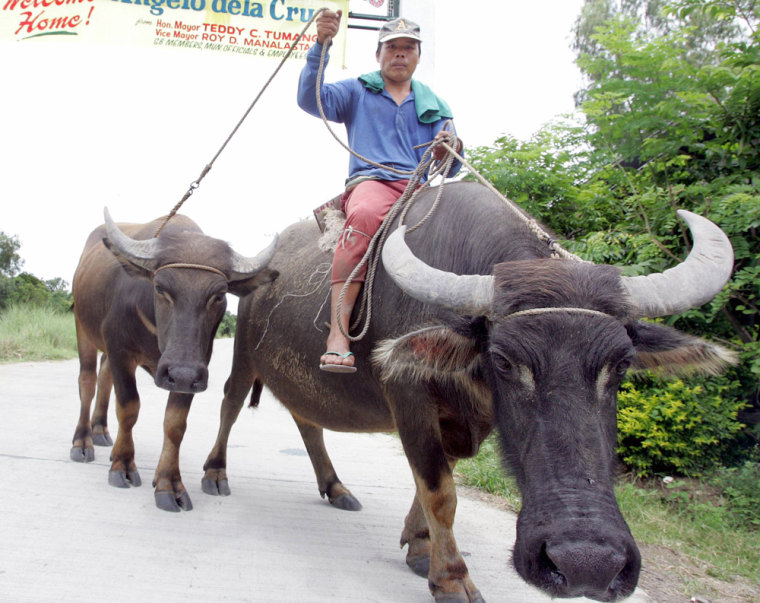Researchers in the Philippines say they are close to creating the world’s first clone of a water buffalo that could eventually help raise productivity levels for millions of impoverished farmers.
The aim is to replicate a “super-buffalo” that would boost the genetic makeup and milk production of the native water buffalo, the carabao, said Dr. Libertado Cruz, executive director of the government-run Philippine Carabao Center.
“We are now in the process of transferring the cloned embryos to a surrogate dam (mother),” he told Reuters on Friday. “By the middle of next year we can expect some live animals.”
The indebted southeast Asian nation is not usually known for technological innovation, but Cruz said cloning had become easier and less expensive since Dolly the sheep, the first cloned mammal, entered the world in 1997.
Brazil has created clones of cattle, including an endangered cow species earlier this year.
Cruz said researchers at the center had created the embryos by fusing genetic material from somatic cells taken from a Bulgarian water buffalo’s ear with the eggs of local carabao.
The Philippines has imported about 3,500 Bulgarian buffalo, which are descendents of a high-yielding Murrah breed from India, Cruz said.
The carabao, of which there are an estimated 3.2 million in the Philippines, is a national symbol because of its role in everything from pulling carts to producing meat and milk. But dairy carabao produce only a relatively small amount of milk, an average of 2.1 gallons (8 liters) a day, according to Cruz.
“In India, where the animal numbers around 98 million, I have seen some animals producing 35 liters per day,” he said. “I would consider these animals as the super-buffalo, but they are not so many.”
Cruz said the plan was to obtain enough sperm from cloned male super-buffalo to start a widespread insemination program in the Philippines that would create higher-yielding carabao.
He said there was no danger of the Philippine carabao being entirely replaced by a new breed of super-buffalo, because there were genetically pure pools of carabao that would be protected.
“In terms of the future worries of these animals getting extinct, it’s not going happen,” Cruz said.
